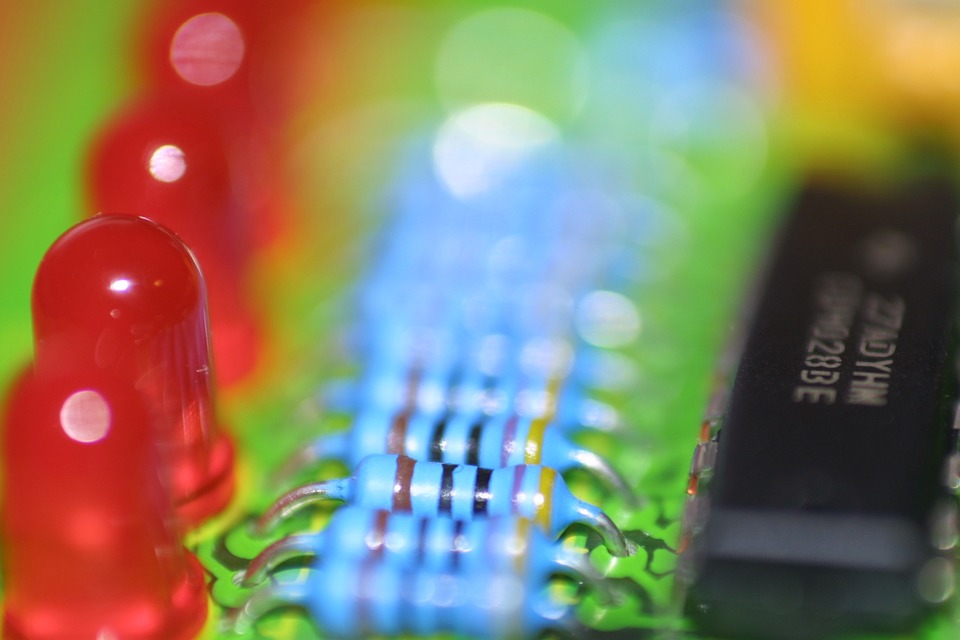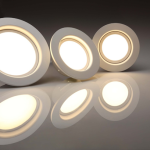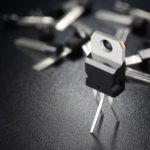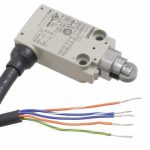
LEDs are one of the electroluminescent luminaries as they are semiconductor diodes and produce light when they recombine charge-carrier pairs in a semiconductor with an energy band gap. Because of the low operating voltage and power, compact sizes, extended lifetime and stability LEDs are utilized in both consumer and industrial markets. One of the main benefits of LEDs is that it can create light without generating a lot of heat and that is why it is more favorable for daily use, but they indeed will generate more heat as compared to other electronic components used in the printed circuit board. Due to this reason metal core and especially aluminum core PCB will be used on LED PCBs. These characteristics makes them suitable enough to be embedded in printed circuit boards. Often, blue and white colored LEDs are used in embedded LED PCBs. They serve as indicator light and are used frequently under polyester graphic and under rubber keypads.
User Interfaces
PCBs are mostly used for the lower circuit in a membrane switch especially due to the fact that they provide structural display windows with LED indicators. There are a few LED choices when you need to decide which ones to use and can be integrated into the membrane switch design.
Single Point and Block LEDs:
These type of LEDs can function with any kind of material surface finishes and are the most versatile. When you need greater light diffusion it is better to use matte surfaces. It should also be remembered that even though LEDs aren’t practically installed as part of the switch active area but graphically they appear to be as part of the switch.
Integral or Surface Mount Single Point LEDs:
These are mounted on the bottom layer of a circuit. A wider variety of colors is available in these LEDs. You can allow for termination from the same connector as the switches themselves if you carve the graphic layer to fill in the space with LEDs.
Advantages:
LED printed circuit boards have a wide range of application but no matter what their application might be their advantages remain the same. Some of the common advantages of LED PCBs are:
- They are light in weight and keep a low profile
- The backlit membrane switch has lower cost.
- They are also dust and moisture resistant.
- They are available in different sizes.
- Have low power consumption.
- They might be used in silver flex membrane switches and copper flex membrane switches.
Applications
Telecommunications
Because of their excellent heat transferability and surrounding machinery LED indicators and displays are always used for telecommunications equipment. Aluminum based LEDs are the most suitable for this application.
Consumer Electronics
Consumer electronics are those gadgets that are being utilized by people consistently. These gadgets incorporate cell phones and PCs, truth be told, even the new types of refrigerators additionally have electronic components in them. The best part about the LED PCBs is that they offer low units per cost which make the cost of the eventual outcome moderately not as much as what it should be.
Medical
Lighting devices utilized in medical procedures and clinical assessments generally utilize powerful LED lights, and these LED lights regularly use aluminum PCBs.
This is fundamentally because of the strength and warmth move capacities of aluminum PCB LEDs — this guarantees clinical hardware is working appropriately paying little heed to the quantity of patients spinning through a clinical office. As well as lighting apparatuses, clinical checking innovation regularly utilizes aluminum PCBs also.
Automotive
We can also use Aluminum LED PCBs in in cars on indicators, headlights, break lights and many other applications. They are used in the automotive industry because of their durability and competitive prices.





















